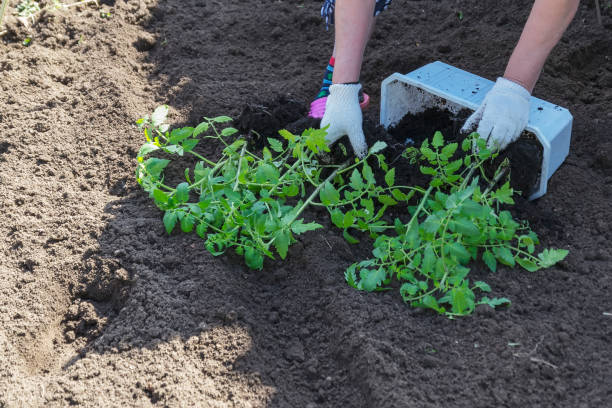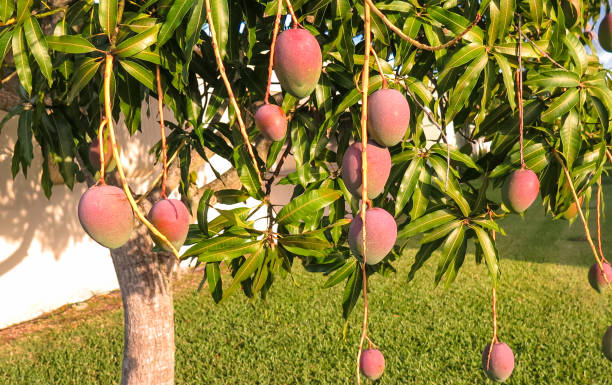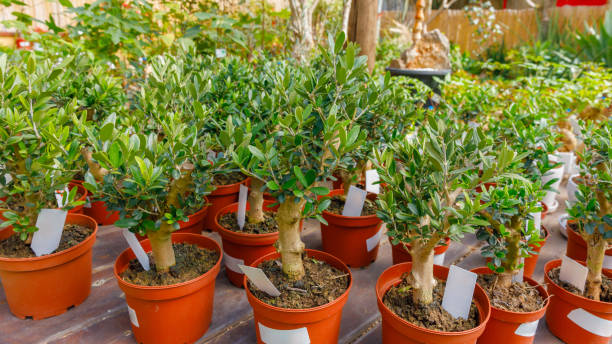Complete Beginner’s Guide to the Best Raised Bed Soil
Incorporating a bed raised in your yard this summer? What a fantastic idea! However, before you start, you’ll need high-quality soil for your garden bed to ensure you’re off the suitable foot. Cultivating vegetables, plants, and flowers in raised gardens differs from planting trees directly from the ground. To achieve this, you will explicitly require suitable soil for your garden’s raised beds.
The use of a raised garden bed offers many benefits. It’s stated that raised beds yield around four times the quantity of product compared to convention. Al.
The plants are more vigorous in the spring, likely because the soil in a raised bed is warmer more quickly than in the garden. We gardeners love the early season growth.
This isn’t the case; however, it’s true if the soil within your garden is not performing at its best. This is the beauty of raised beds. You can dig them up and fill them up however you want.
Imagine this controlled study you’re conducting to find the perfect mix of organic matter that includes beneficial microbe, other living thin, gs, and naturally occurring nutrients, such as minerals and nitrogen.
If you want to begin creating your garden beds, This article is for you. We’ll go over exactly what you need to think about when selecting the soil mix you want to use, and we’ll also provide our top recipe that is easy to cook at home.
However, you’ll also be taught how to modify the soil to suit every plant, such as fruit, vegetable, or flower you wish to plant in your garden bed. Let’s start!
What to Consider When Choosing the Best Raised Bed Soil
A garden raised is different by planting flowers and plants directly in the soil. Before you begin to shovedirtil in your garden beds, remember the following tips in your mind:
Step 1: Determine Raised Bed Height
By measuring its dimensions, you can determine what amount of dirt you’ll need to complete your raised bed garden. Various practical calculations can help you choose your garden’s shape and size. Generally, you’ll require more soil to make your bed higher than your garden bed.
Gardening is more enjoyable on your back if your garden beds are raised or feature a tabletop design.
But raising the height does not necessarily mean increasing the cost of your raised beds. You could also decrease the soil mix needed for an elevated bed by filling the base of a high ground-level bed with filler like dead leaves of cardboard.
Step 2: Evaluate Plant Type and Root DeptPlant life on the property determines the proper soil depth for an elevated bty. Create a raised bed at least six inches deep as a guideline. This drainage level keeps enough moisture in the soil for many well-known cultivars.
Certain plants have more robust root systems than other, more deep-rooted plants. For example, a minimum of twelve inches would be suggested if you wish to plant root crops such as carrots.
The benefits of gardening in raised beds apply to all kinds of plants, but veggies greatly benefit from this kind of gardening. By elevating the area of your garden, it is possible to reduce weeds, maintain the soil’s temperature, and stop it from getting compacted.
Gardeners also gain from starting with pure pH-neutral soil. However, if you’ve previously used soiled, it is recommended to examine it to determine the need for any amendments or fertilizers to replenish the nutrients.
Here are some depths for the most popular crop varieties:
6-inch Soil Depth:
- Lettuce
- Salad greens
- Spinach
- Onions
- Leeks
- Radishes
- Strawberries
- Basil
- Chives
- Cilantro
- Dill
- Mint
- Oregano
- Parsley
- Thyme
- Marigolds and various other annual flowers
12-inch Soil Depth:
- Beans
- Beets
- Broccoli
- Brussels sprouts
- Cabbage
- Cantaloupe
- Carrots
- Cauliflower
- Collards
- Cucumbers
- Garlic
- Kale
- Swiss Chard
- Summer squash
- Turnips
- Lavender
- Rosemary
- Sage
- Borage
- Calendula
- Everything from the previous list
18-inch Soil Depth:
- Eggplant
- Okra
- Peppers
- Pumpkins
- Sweet potatoes
- Tomatoes
- Watermelon
- Winter squash
- Everything on the previous two lists
Step 4: Consider the Soil Components You Require
Many gardeners are familiar with tried-and-tested mixtures of soso il, so it’s generally recommended to steer clear of inexpensive boxes of raised bed soil.
A healthy soil mix includes topsoil, a tiny amount of substance, and an enormous amount of compost, which supplies the nutrients necessary to enhance the soil’s condition.
Many of them, the most affordable dirtbags, are not the best quality and are packed with rubbish, weed seeds, and other unpleasant items. They’re less likely to provide the essential nutrients your plants require.
Topsoil is a filler soil essential for everything from gardening in raised beds to cultivating plants in indoor pots. It makes up the bulk of the soiusedilized for lifting mattresses. It’s not a great source of nutrients. However, it is a vital component that has organic matter within it.
The substrate makes up all portions of what is used for a raised garden. However, it plays a critical role. Water control is essential in a raised garden and helps accomplish this.
Peat moss, rock phosphate vermiculite, perlite, and coco coir are potential substrates for soil mixes. Again, the needs for the substrate can differ based on the kind of plants you want to plant.
1. Compost
This is the primary source of all the nutrients needed by plants. The various pre-packaged compost, such as mushroom and cow manure compost. Chicken poop compost and the worm-casting compost.
If there is a composting pile at home, it can count towards your total. It’s our preferred option because it’s free and brimming with great nutrients. If you’re considering starting your compost pile, check out the complete full guide to composting here.
2. Vermiculite
Vermiculite is vital to ensure your garden beds’ proper drainage and aeration. The roots of plants do not like being in the water, so the soil must drain the water at a suitable am (i.e., not too fast or there).
Mixing vermiculite with peat moss and compost, you will get pent-up air.
3. Peat Moss
Peat moss is dead moss that has been rotting and decomposing for an extended period.
It is capable of helping the soil to hold onto the nutrients and water for plants to obtain the water they need. It also assists in breaking up topsoil and compost, which would otherwise be too dense and complex.
Be careful not to add a large amount of peat moss because this could result in the pH being out of balance and cause an increase in the acidity of the soil. If you’ve made a mistake, lime can aid in balancing the soil’s pH by boosting it.
Step 5: Get Some Topsoil
Topsoil is distinct in comparison to garden soil. The term “topsoil” refers to, just as its name suggests, the soil’s top layer. It is an excellent soil to fill garden beds or prepare a grassy lawn.
It’s not full of nutrients. However, it does contain crucial organic matter that serves a function.
Do you want to purchase bags of topsoil that you can use for those raised beds? Start by putting the topsoil into it as a great filler and abandon it. The topsoil must be coated with a richer mixture of compost, peat moss, and soil to feed the plants.
Step 6: Mix in Some Fertilizer
The best fertile soil to plant a raised bed is rich in nutrients that promote the growth of your garden. Worm castings, compost, and sea kelp are just a few instances of natural and organic types of fertilizer you could add.
You don’t need to worry about soil contamination with these fertilizers as they enhance the quality and condition organically.
Organic fertilizers help prevent potentially harmful build-up and safeguard plant life from excessive nutrients.
Specific soil mixes that are suitable for raised beds could include synthetic fertilizers. They can help boost the levels of nutrients quickly; however, unlike organic options, they do not enhance soil texture, quality, and conditions. Due to this, it is recommended to purchase or mix soil mixes that contain organic sources of nutrition.
How to Start with Soil for Thrashed Garden Bed
The easiest way is to purchase topsoil and compost packed in bags and then fill the bed’s container. If you already have your compost or have access to an organic, reliable compost, we were fortunate enough to receive it from a local organic dairy goat farm. It’s worth creating your soil recipe.
This allows you to adjust it for specific plants. Do you have tomatoes? Your soil should be a little acidic, precisely how they prefer it. Growing greens? You’ll need to reduce nitrogen until you’ve got the seeds germinating.
If using compost, ensure it’s done. If you add manure, you must ensure they’re fully composted and haven’t become “hot.”
Mix in other ingredients such as pumice, peat, or vermiculite if you’re seeking good drainage or sand, which root vegetables love. The easiest way to ensure that compost is ready for gardening is spreading it throughout the fall and leaving it on the ground to dry out over winter freeze and thaw cycles. Winter.
If you didn’t make compost in the fall or do not have enough, you can create it from scratch and plant your garden in it the same way you would. We’ve snuck a bale or two of straw into a raised bed during the fall and were successful after we took the leftovers off in the spring.
The bale doesn’t just protect any weeds that may attempt to sprout in the early spring the next day and improves the soil under the area in which it is placed.
We have even heard of someone who put a bale directly on the sod where he placed his box in August. He ended up in topsoil when it was time to plant the following spring. I’d take the effort of digging into the dirt before laying down bales. However, that’s only me.
If you’re planning to install your first raised bed this year, why don’t you plant your first plant right into those straw bales? The art that is the straw bale garden is growing in popularity and for a good reason. Many gardeners skip the box and expand their plants within the bale.
The Perfect Raised Bed Soil Mix Recipe (Weed-Free)
Organic garden soil is the most essential ingredient to nutritious, healthy vegetables.
It’s soft and fluffy. It is filled with the air plants require and contains plenty of minerals and nutrients essential for vigorous plant growth and plentiful yields.
Incorporating your raised beds with soil is an opportunity to acquire top-quality soil and fine-tune the mixture of fertilizers and amendments.
The soil mix below was created with Planet Natural to fill a 4 8′ X 4 raised bed, 1 foot in depth (32 cu feet).
Five bags of Black Gold Peat Moss, 2.2 Cf x 5 = 11. cf
Three bags of Teufel’s Organic Compost 3 cf x 3, which is nine cubic feet
Bags of Worm Castings 1 4 four = 4 cm
Three bags Organic Chicken Manure 1 Cf x 3 =3 cf
2 bag Therm-O-Rock Organic Vermiculite, 2 cf x 2 = 4 cf
3-6 lbs Azomite
1-2 lbs Kelp Meal
3-6 lbs Oyster Shell Flour
2-4 lbs All-Purpose Fertilizer
Ensure you have all the components for your soil mix before you begin filling your beds. Mix the soil the best you can, using a large tarp when needed, to avoid pockets of manure, peat, or other components.
How To Amend Raised Beds For Better Soil Health
This recipe is a great way to start, but you must modify and adjust your soil to suit the plant you plan to grow!
As we’ve already mentioned, one of the best options is to include a slow-release organic fertilizer to the soil of your garden bed raised
Each year, Incorporating this into the soil at least once can improve its quality and the number of nutrients it contains. Apply it at the start of spring or toward the close of the fall.
After applying the mulch, then cover the area with an even layer of mulch or compost. Mulch helps keep the soil moist and also preserves nutrients.
Soil amendments can be very effective in helping to alter the water level, pH, or the soil’s aeration to be more suited to the plants you’re planting in your garden beds.


